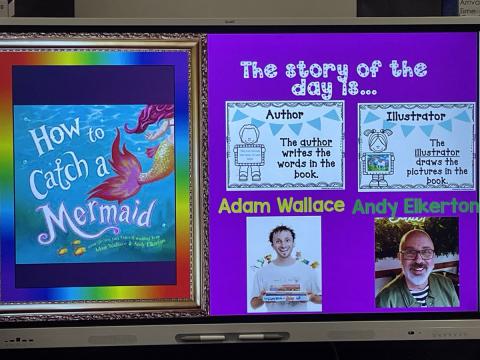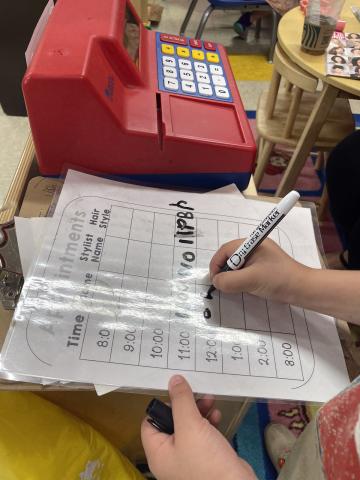Technology Guidance for Prekindergarten
Guidance: Technology and Media in Early Childhood Classrooms
Technology use in the early childhood classroom can serve the purpose of supporting learning opportunities, strengthening relationships with adults/peers, and ultimately preparing children for college and career readiness in the 21st century (US Department of Education; Department of Health and Human Services 2016). When using technology and media tools appropriately, early childhood educators can use them to enhance, without replacing, creative play, exploration, activity, conversations, and social interactions among children in the classroom (Fred Rogers Center 2012).
Technology Use Best Practices
- Explicitly teaching digital citizenship as set forth by the Texas Prekindergarten Guidelines (PK4 outcomes only):
- Navigation through digital learning applications to contribute products and ideas (TPG- PK4X.A.1, 3)
- Use and name a variety of digital tools that support learning (TPG- PK4X.A.2)
- Use technology to access appropriate information (TPG- PK4X.A.4)
- Practice safe behavior while using digital tools (TPG- PK4X.A.5)
- Setting parameters for screen time based on leading research:
- Screen time (TV, videos, digital media, etc.)
- Less than 30 mins for half-day programs; less than one hour for full-day programs (McGuire 2012).
- Children older than 2 years
- No more than 1 hour per day of high-quality programming (American Academy of Pediatrics 2016).
- Screen time (TV, videos, digital media, etc.)
- Using technology for active, joint engagement and interactions, such as co-viewing of media and asking children questions about what they are viewing, playing, or making connections to what they have learned (Paciga and Donohue 2017).
Although the use of technology has many benefits within academic settings, it is important to note the parameters to limit over-using technology, specifically in early childhood settings. With the common use of technological devices available in our classrooms, it is important to keep in mind that any and all technology use counts as screen time.
Examples of what to use in the PK3 and PK4 classroom instead of technology:
- Digital media use during whole group time- It is recommended that early childhood programs limit the use of teacher-led digital activities (e.g., playing a music video; interactive slide deck). It is recommended to use manipulatives, interactive wall décor or modeled music and movement (audio only or instruments) to engage a child’s five-senses during whole group time. A decrease in the use of one-way models of teaching, such as children viewing a screen, increases two-way social interactions and promotes the use of language and communication (TPG- PK3/PK4.II.B.2; PK3/PK4.III.A.1; PK4.VIII.B.1).
- Digital media use in centers- It is recommended that classrooms have set parameters and limit time for student use of computers and tablets. This can be implemented through the structured use of timers, “sign in” sheets or limiting a technology center for use only during specific day/s of the week, such as during visits to the school site computer lab. (TPG PK3/PK4.V.D.4).
- Digital media use for literacy activities- it is highly recommended that all books be directly read by adults and children (e.g., picture walk) and not through primary means of technology. Classroom staff should be modeling the developmentally appropriate use of book handling procedures and print directionality, as well as skills that build the comprehension of text (TPG-PK3/PK4.III.D.1; PK3/PK4.III.D.2; PK3/PK4.III.D.3; PK3/PK4.III.D.4; PK3/PK4.III.E.2).
See CLI for more resources and exemplars on learning centers and the Technology in Early Childhood Center for more resources with technology in the early childhood classroom.
Sources
Fred Rogers Center. 2012. Fred Rogers Center Joint Position Statement on Technology and Interactive Media as Tools in Early Childhood Programs Serving Children from Birth through Age 8. January. Accessed October 10, 2022.
McGuire, Shelley. 2012. Institute of Medicine (IOM) Early Childhood Obesity Prevention Policies. Advances in Nutrition 3 (1): 56–57.
Paciga, Katie E., and Chip Donohue. 2017. Technology and Interactive Media for Young Children: A Whole Child Approach Connecting the Vision of Fred Rogers with Research and Practice. Latrobe, PA: Fred Rogers Center for Early Learning and Children’s Media at Saint Vincent College.
US Department of Education; Department of Health and Human Services. 2016. Early Learning and Educational Technology Policy Brief. tech.ed.gov. Accessed October 10, 2022.
Last Updated 1/10/24



